Sean Fraker - The Future is Here – Liquid Applied Roofing Membrane - PODCAST TRANSCRIPTION

Editor's note: The following is the transcript of an live interview with Sean Fraker of Sika. You can read the interview below or listen to the podcast
Speaker 1:
Welcome to Roofing Road Trips with Heidi. Explore the roofing industry through the eyes of a long-term professional within the trade. Listen for insights, interviews, and exciting news in the roofing industry today.
Heidi Ellsworth:
Hello and welcome to another Roofing Road Trips from Roofers Coffee Shop. My name is Heidi Ellsworth and I am here today virtually road tripping across the country to one of my favorite places, Florida. And we are going to be visiting today with Sean Fraker of Sika. Sean is working in the liquid applied division who has been doing some great stuff on Roofers Coffee Shop. They have some amazing systems, beautiful installations, and so I'm really excited for everyone to meet Sean and to talk about what's happening over there. So welcome to the show, Sean.
Sean Fraker:
Well, thank you very much, Heidi. That's quite an intro. I'm not sure I can live up to all of that, but that's great.
Heidi Ellsworth:
Oh, no problem. We like these conversations and I have to tell you with the growth of liquid applied roofing systems and what they're doing to help facilitate so much that's going on out there with roof restoration and not even to start to talk about the material shortages and everything else, this is a hot topic. And what you all are doing is pretty cool.
Sean Fraker:
Yeah. We're fortunate to be in a situation where over the past, well since 2009 when I came on with Sika from an acquisition of Liquid Plastics, a European company, it's been a growth journey that's been fantastic. And you're right. The advances in chemicals and the technologies that are out there today from several manufacturers have taken us into a marketplace where it's no longer the only answer is tear off and replacement, it's actually now you've got the opportunity if the substrate's still in good shape, why tear it off? Why fill up a landfill? Why re-insulate and dispose of everything versus put a high performance coat on it or a high performance coating system that's married with a reinforcement and offer another 20 or 25 years on a warranted system, especially on school systems and in shopping malls and all these places that have these large, massive roofs. They lend themselves to work very well.
Sean Fraker:
And in Sika's situation we've got cold applied from acrylics, we've got silicones, we have urethanes, and then we have high performance urethane systems that are matched with a fully reinforced systems that are really like creating a membrane system customized on every roof. And then of course, we've got the recent acquisition of American Hydrotech that brings a full line of hot products with this as well. So it's really a full line of products now that we can offer to the customers and it's a very exciting time.
Heidi Ellsworth:
You are so positioned and I see it even, and I'm sure you're seeing it too, but the roof restoration, it's not just a small thing growing, it's like taking over. I hear about it all the time. But I would love for you to share with everybody just a little bit of history about you. Tell us just a little bit about, you said the companies that you've worked for and your experience in the roofing industry.
Sean Fraker:
Sure. Well, we won't go too far back, but the original was that it was I was a kid in high school and carrying shingles up a ladder for local roofers and told myself, "I'll never do this for my career. There's no way in heck I'm going to be a roofer for the rest of my life." And here we are 58 years old. So it does happen. But yeah. I actually left the automotive industry, robotics and tool and dye making from a sales position 14 years ago and started with Liquid Plastics. Liquid Plastics is a 35, 36 year old company in the UK, predominantly the liquid product of choice in the UK. Now just with a Sika label on it. And we had a very unique chemistry. So it was a single component, aliphatic urethane, that was moisture triggered cured.
Sean Fraker:
So in other words, it wasn't moisture cured like a typical urethane where it needs the presence of moisture at all times to complete its curing process, the Liquid Plastics technology, now the Sika technology, just needs the presence of moisture to start a molecular reaction that starts the curing process. The big advantage of that in most markets is, is as long as you put it down on a dry substrate, it will cure under water. It can virtually rain on it within minutes and it will finish the cure and be waterproof. So that's kind of the background in what interest me the most in the business was its unique chemistry and quite honestly, there's nobody else that plays in that unique single component world. I mean, we have competitors, sure. Everybody does, but from the longevity of the product and the history of the product, we're the guys on the block.
Heidi Ellsworth:
Yeah. I think that's so interesting and when, really, as we're looking at labor shortages and what's going on and just sustainability overall, but the fact that you can go down over a dry substrate and then it just goes from there, I would think that would help hugely with labor.
Sean Fraker:
Well it does and the other thing that's significant too is that it's single component. So no offense to the labor market that's out there, but it's no secret that all of us in no matter which discipline of the world you're in, automotive, tool and die making, any skilled labor set just gets smaller and smaller and smaller as we get older and older and older because the generations that are coming up have not been raised to do manual labor and develop a skillset, whether you're a tool and die maker, a wood maker, a cabinet maker, or a roofing technician.
Sean Fraker:
I mean, we have to come up with systems that are so simple to use and ours is a single component product. You literally open the bucket, you do not mix it, you put a roller in it or a pump apparatus, and you immediately begin to use it and apply it to the roof. The next generations of these products along with the primers or primerless systems are going to make it simpler yet. So literally a supervisor from a roofing crew with experience can direct a group of guys that are fairly new to the industry and pretty quickly put down a state of the art, long-term system.
Heidi Ellsworth:
That's a huge solution. And when we look at all the new technologies that are coming out, you can really almost see where that's going to go in the future too. The-
Sean Fraker:
Absolutely.
Heidi Ellsworth:
Installation will get easier and easier and easier.
Sean Fraker:
Yep.
Heidi Ellsworth:
Because we may have robots, but we probably aren't going to have as many people.
Sean Fraker:
That's for sure. That's for sure. I agree.
Heidi Ellsworth:
What are you hearing from the building owners on this? I mean, I just always find that so interesting and as they're thinking about roof restoration, what's the demand coming from that side?
Sean Fraker:
Yeah. It's really twofold for us. There's the building owners that are looking to occupy the building and rent out the space and flip the building in five years. They're more conscious of economics, "Dry me in, make sure that my residents, my renters have a dry system to work over or under." And then you have long-term, companies, big national companies that have large office spaces or even your big box stores that are very, very conscious now about finally realizing that, "Hey. The number one thing that protects me from the elements is the roof. I need to focus my energies and my finances on what goes on to protect all my content." So we're seeing a shift in both marketplaces where, and a lot of it's driven, as you hinted earlier, from the raw material situation that's going on here.
Sean Fraker:
There's shortages, obviously, in the insulation, in the fasteners, in TPO, EPDM, PVC, you name it, it's out there. There's shortages in liquids. So what can an owner do when he's got a roof that he doesn't need to tear off, that's still got some good life in it, and he's a conscious owner? Can he patch it with liquids? Yes. Can he patch it with sheet good? Yes. What's the most effective, easiest thing to do for maybe his maintenance people to do or maybe a contractor to do? Obviously our products are installed by approved contractors so that for the liability that we put into the roof from the warranty standpoint, we want to make sure that the guys who are putting it down are prepping it correctly. And it's just like anything. Prep is key. So what we're doing is, is we're finding that there's a larger educated customer base out there that is making a conscious effort to truly take care of their facilities and it starts at the roof level.
Heidi Ellsworth:
Yeah. I'm hearing the same thing from a lot of folks and I'm really kind of interested. Let's take that one more step, from the design community. And I mean, even the roof consultants. I mean, I know there's been some resistance over the years, probably past years, on these new types of systems, but it's really gained traction.
Sean Fraker:
Yeah. It's funny because I've got a lot of friends in the European community and they talk about how fast things are accepted, new things are accepted over there. I always use the example of my grandfather. When it was time for him to get a new car, my brother and I would say, "Pops, you need to go out, look at a Toyota. You need to go look at a Honda." "Nope. I've had a Buick since I was 16 years old, I'm going to drive a Buick the rest of my life." It's not much difference in the United States in the roofing industry. When you get a guy that says, "I always put down a hot three core system with a cap sheet on it. That's what I've always done and that's what I'm always going to do."
Sean Fraker:
Those people tend to be a hard sell, but when they realize and make the effort of the economic impact that it could have, the environmental impact that it can have, there's a lot of products out there that they will gravitate towards. And we see the architectural community making that shift, especially in the big environmentally conscious groups that are in New York City, in San Francisco. Those folks are very, very conscious of lead points, of, "Do you have environmental declaration policies? Do you have the full cradle to grave study on what your product does?" There's a big shift in that momentum. And then obviously the younger folks that are coming right out of architect and engineering school, they don't have a lot of hands on. They haven't walked all these different roofs that the folks that are my age have walked over their lives and they've seen the good, the bad, and the ugly.
Sean Fraker:
So alls they know is what they can find on Google or what-
Heidi Ellsworth:
Yeah.
Sean Fraker:
They can find on my website or Tremco's website or anybody's website for that matter. And they get a very small snapshot of an education and they think they're making the right decision, but when you open the can of worms, you find out that there's not one solution for everything. So we're seeing a shift, but it's still a heavy, heavy educational type program that we have to go out to and see these people. And the last two years with COVID didn't help either. People were doing everything like this, podcasts, and we were doing webinars and stuff like that. So it's good that lately we've been getting back out into the marketplace and actually sitting down across from a table and talking to people and showing them samples or taking them out on a roof and going on a road trip. But we're seeing the shift in that market.
Heidi Ellsworth:
Right. Yeah. I think you're 100% right. The Gen Z coming up and millennials, but Gen Z especially are going to start having demands on that and how many of them are not only graduating in architecture and engineering, but they're also purchasing agents.
Sean Fraker:
Yep.
Heidi Ellsworth:
And they're-
Sean Fraker:
Exactly.
Heidi Ellsworth:
They have things. So maybe can you share just a little bit about Sika too and kind of their commitment? I mean, I'm just so impressed with the variety of products and solutions and I know we're talking about liquid applied, but just kind of maybe a little bit of that high level.
Sean Fraker:
Yeah. I mean, from an overall building envelope concept, Sika has really become a company worldwide. I'm not sure of the exact count anymore, but I know in over 105, maybe over 110 different countries now that we're in with all kinds of technologies from literally from below grade to the roof surface and everything in between. So decorative flooring system, interior finishing systems, concrete ad mixtures, sealants, traffic coatings. The list sometimes, from my perspective in being in my small world of liquid applied, until I go to a national meeting or I work with some of my peers within Sika, there's a lot of times I go, "Oh. That's right. We do that too." A Marine division, Marine sealants, Marine coatings, it's automotive, the baffles that go in your car to help keep it quiet, the sealants that go in a windshield to hold the windshield in place. We've become a very large, very advantageous company, a true single source solution company to work for.
Heidi Ellsworth:
And when you have that, the innovation that crosses across the different divisions also, you're not just looking at one thing, you're looking at so many different things and those innovations can be used across the board. And that's what I see a lot coming from Sika is just constant innovation.
Sean Fraker:
Yeah. Absolutely. The innovation is key. Our new global CEO came from R&D. So there's a lot more focus on that as well, which is exciting for a lot of us, but you're right. We have a practice within Sika called cross selling and it's the responsibility of everybody that works for Sika to make sure that when you're out on a job is to ask, "What are you doing with the roof? What are you doing with the floors? What are you doing with the parking garage? What are you doing with the facade of your building? Do you need new acrylic coatings? Do you need high performance window solutions? What are the things that we can help with?"
Sean Fraker:
The other thing that's key to Sika is all of our systems have been tested, for lack of a better term, to play nice with each other. There's nothing worse at the end of a beautiful project than to have four manufacturers, two engineers, and three architects all pointing their fingers at each other because nobody thought about compatibility with products. And all of the Sika products are designed specifically and tested specifically to work well with each other and not have compatibility issues and we'll be the first ones to stand up and say, "Mr architect, Mr. Engineer, Mr. Contract, you shouldn't do that and this is why."
Heidi Ellsworth:
Yeah. And with the movement for roofing contractors who are really expanding their businesses, and I mean, this isn't a new thing. We've had some-
Sean Fraker:
Right.
Heidi Ellsworth:
Amazing, large commercial roofing contractors who are doing waterproofing, who are doing the whole building envelope. To be able to have the experts to come and talk to, to really understand that, is key.
Sean Fraker:
Yep. Yeah. And we really look forward to opportunities to working with contractors like that because they are so conscious of doing the right thing for the customer and that's one of Sika's primary premises is, is to make sure that we do right by the customer-
Heidi Ellsworth:
Yeah.
Sean Fraker:
Because it's no secret, there's all kinds of ways for the customers to get steered in the wrong direction and to work with a contractor that is so broad in technology that can do roofing, that can do repair and protection on the building. It's a huge advantage for us, let alone it cuts down on invoicing, it cuts down on warranty paperwork. There's so many things. There's only one person, one manufacturer that you actually have to go to is, is you call one single person instead of calling 15 and letting them argue it out in a conference room if there's ever an issue.
Heidi Ellsworth:
And making those transitions from the roof to the wall or from the wall to waterproofing the basement, so critical. And it-
Sean Fraker:
Oh yeah.
Heidi Ellsworth:
Has really been something in the past that was missed.
Sean Fraker:
Yep.
Heidi Ellsworth:
The roofing contractor's like, "I'm doing this part, walls, they're doing a GC or whoever it may be doing this part, and the waterproofers are doing down here," and no one's connecting all the pieces together. So-
Sean Fraker:
Exactly.
Heidi Ellsworth:
As you are looking at roofing contractors today, all the, let's just say, headaches that they have right now, what's some of your advice on how they can differentiate their business, but with liquid applied roofing systems, how they can kind of make this ... they may be listening. I'm sure a lot of them are listening right now saying, "Okay. This all sounds great. Sustainability, all those kind of things, but how can I make the move to bring this into my business?"
Sean Fraker:
Well number one, it's education. Call us call. There's several of us out there that are manufacturers that are very conscious of doing the right thing by the customer and don't make rash decisions, make educated decisions, take the advice of those professionals that are the in the industry like ourselves that have large technical staffs, have a lot of experience, and then judge for yourself what is going to fit best with your company. Again, like I said earlier, there isn't a one solution fits all. There's some things that are pretty close, but there still isn't one. And the other thing that I always strongly encourage, much as my wife strongly encourages me to do, is open my eyes and think outside the box.
Heidi Ellsworth:
Yeah.
Sean Fraker:
Just because we've always done it this way doesn't mean that this is the way that's right. There's always something new in the marketplace and always something worth looking at. Most manufacturers will gladly come into your facility and demonstrate their products and show you the good, bad, and the ugly and prove their systems are good for certain things and not good for other things. But again, you be the judge, but make an educated decision and just because the salesman said so, we don't always have all the right answers.
Sean Fraker:
We think we do because we're salespeople, but on the other hand, educate yourself and ask the answers. Make sure it fits in economically. Does it perform? Does it meet your customer's expectations? And again, maybe it's not one, maybe my product works great in this situation, but XYZ companies works great in another situation. And I'll be the first one to tell you that-
Heidi Ellsworth:
Yeah.
Sean Fraker:
You really shouldn't do that with my product. You can, but it's probably not the best solution.
Heidi Ellsworth:
That's the relationship and the partnership you need-
Sean Fraker:
Absolute.
Heidi Ellsworth:
Because that's what keeps people out of trouble.
Sean Fraker:
Absolutely. Absolutely.
Heidi Ellsworth:
I mean, what are you seeing with the contractors who have made that step, adding it into their business model. What kind of success are you seeing there?
Sean Fraker:
Huge success. Again, if they take the time to educate their staff, their crews, they understand the product, they understand the storage of it, they understand the systems and the paperwork that has to take place to properly warrant the system and register the project. Very high rates of success, very profitable, very, very low, I mean extremely low claims calls on our product. Yeah. You have to blatantly completely forget to do something or ignore something to get yourself in trouble with some of these new products that are out on the marketplace today. But the customers that we have switched from other technologies or even competitors' products, the simpler, the better. We found a great deal of success where if I need one bucket of this to do X, Y, and Z, and I need this primer to do the same X, Y, and Z, this is my kit.
Sean Fraker:
This is what I'm going to market with. This is what I'm going to solve this problem with. It isn't a warehouse full of 50 different things going, "Oh, I got to use that up. I got to use that up. It might work here, but it doesn't work here." So again, those are the guys that are very, very successful, that have a controlled approach to the market, that say, "I'm going to be a full blown roofer or I'm going to be just a restoration specialist or I'm going to be just a maintenance contractor." Those are the guys that do really, really well that stay within their lane.
Heidi Ellsworth:
Yeah. Knowing your market and knowing your employees and crews and-
Sean Fraker:
Absolutely. Absolutely.
Heidi Ellsworth:
It seems to me like a really important step that sometimes gets forgotten too is really the education of your sales team. I mean, when they're sitting with architects, design, building owners, if your sales team, as a roofing contractor, is not fully knowledgeable on these systems and when it, like you said earlier, when it should be used and when it shouldn't be used, that can really cause problems for contractors too.
Sean Fraker:
Yeah. It certainly can and one of the things that my sales group does and my technical sales group does is they listen extremely well. So we always encourage our partnership relationships, whether it's with a distributor or it's with a contractor, is take us to your meetings with you. We'll sit in the back of the room and keep our lip sealed if that's what you want us to do, but we're there to listen, to make sure that you don't get in trouble, that you're not promising something that you shouldn't to the owner. And we're there to listen and hear the things that you're not because you're conscious of, "How do I get this job? How many guys am I going to need to it?" Because if most of the guys are anything like me, as soon as the customer tells them what they want, my wheel starts spinning. "I got to do this, I got to do this I got to do this."
Sean Fraker:
Let's stop and listen. So us as a partnership, working together and listening to these owners together as to what they really need, nine times out of 10 we get out into the parking lot with the contractor and the contractor says, "I think I'm going to do this and this and this." And we'll go, "Whoa, whoa, whoa. Wait a minute. He said he wants to do this. So let's do this here." And they'll go, "Oh, that's a great idea." Or the contractor will do that to us saying, "No, no, no, no, no. Sean, you're missing the point. What they need to do is this." And I'll say, "Oh. Well then we need to switch to this. Why don't we do this for the customer?" So again, it's key with the partnership, it's key with the relationship.
Heidi Ellsworth:
Yeah. And one of the things I'm thinking about too is, for the future. So contractors who start bringing this type of business into their portfolio and really start offering it, it also opens up amazing doors for service and maintenance and that ongoing relationship. What are you seeing there with them? The roof restoration and then you can't just walk away. You need-
Sean Fraker:
Right.
Heidi Ellsworth:
To keep coming back and being a part of that roof.
Sean Fraker:
And that the key to developing an ownership relationship where they trust you. When they call you and they have a leak, you can go in and fix it and you've got the right products in your truck. So that's key is the response time and having an educated crew. That's one of the reasons, again, I'll go back to Sika making their products easy to use. For a service guy, nine times out of 10, they're rushing around to multiple jobs trying to solve multiple issues. So let's give him the tools in their truck and, for instance, our roof pro product, they literally can open the bucket, use what they need, put the lid back on it, put it back in their truck, and four months from now, they can open the bucket and whatever they didn't use is still in there, it's still a good product, it's still performing well.
Sean Fraker:
And so make it simpler for them to use, but absolutely. The relationship that you have with that owner on trusted products and your crew showing up on time and doing what they're supposed to do and solving their problem only leads to repeated work more and more. It's nonstop.
Heidi Ellsworth:
Yeah. Yeah. And that's what I keep seeing and what we keep hearing is the contractors who are really looking at the type of products that they can offer and then combining it with really strong warranties, obviously, but also combining it with a service and maintenance program, the service and maintenance programs out there have just gone through the roof. I mean, because-
Sean Fraker:
Absolutely. Absolutely.
Heidi Ellsworth:
COVID only help that.
Sean Fraker:
And I think you bring up a very good point there too about warranties and it's no secret that manufacturers write the warranties.
Heidi Ellsworth:
Right.
Sean Fraker:
So I always encourage people, when folks call me say, "Well, I'm going to put down five square feet of this product and so and so's given me a 30 year NDL warranty," I'll say, "Great. Use that product," because that's not true, it's not honest, and I always encourage owners and contractors read, have your lawyers read the paperwork, read what the warranty says so that we know when we're going in together because we both need to protect ourselves. It's unfortunate. It's the world we live in, but let's be honest with each other and read the document. If they say they're giving you something, kind of.
Heidi Ellsworth:
Yeah.
Sean Fraker:
Anybody's could be interpreted any way they want.
Heidi Ellsworth:
And that honesty correlates back to the building owner.
Sean Fraker:
Absolutely.
Heidi Ellsworth:
Because that building owner probably, I mean, I know in some cases they will, but probably is not going to go to the manufacturer and complain. They're going to come back to the roofing contractor.
Sean Fraker:
You're darn right they are.
Heidi Ellsworth:
That transparency is so important.
Sean Fraker:
Yep. Absolutely. Agreed. Agreed.
Heidi Ellsworth:
Wow. So Sean, this has been great. I love this. [crosstalk 00:26:11] Yeah. So informational. We're coming to the end of our podcast, but I would like to throw one more question at you.
Sean Fraker:
Okay.
Heidi Ellsworth:
Kind of looking over the next 18 months. And I know the last 18 months have been unprecedented, but looking in to the next 18 months, what's some of your advice to roofing contractors on their business and what they should be looking for and kind of how to navigate some of these waters?
Sean Fraker:
Yeah. Plan ahead. Because it's no secret that it is going to be some rough waters here for the next several months. Most of the projections that we're looking at now for raw materials, logistics, things like that are at least another nine to 12 months out yet. This isn't going away, what we're living through now. Not being able to get insulation and fasteners isn't ending anytime soon. I was in San Francisco three weeks ago. I was amazed at how many cargo containers are sitting out in the bay that can't get in. And when they do get in, they can't get on a truck. And when they do get on a truck, they don't have a driver. You need to plan well, well in advance. The cost increases are daily for us.
Sean Fraker:
I spend more time, and my sales people spend more time, managing projects and where to get product, to supply a project in the field level. And at my level, I spend hours every day looking for raw materials with our procurement people. "Where is it going to come from this month?" "Well, it was supposed to be in last week." "Where is it?" "Well, we think it's in customs. We think it's on a boat somewhere in the Atlantic." So all of these things just, they consume cost, they consume time, the amount of planning and convincing your customer to place the order early and get in line is key for a minimum of the next 12 months.
Heidi Ellsworth:
Yeah. And I think along with that, and we keep hearing this over and over again, is really, really be looking at your contracts. Really-
Sean Fraker:
Oh yeah.
Heidi Ellsworth:
Making sure that you have your contracts in a way that will navigate some of this. So it goes right along with what you were saying, that-
Sean Fraker:
Absolutely.
Heidi Ellsworth:
Contractors can't protect themselves enough.
Sean Fraker:
That's right. That's right. And we're being as upfront as we possibly can, giving people early information about logistics issues, about supply issues, about cost increases. They're happening every day. Every day something new is happening.
Heidi Ellsworth:
Scary.
Sean Fraker:
Yep.
Heidi Ellsworth:
Scary.
Sean Fraker:
Very different world.
Heidi Ellsworth:
Oh my gosh. Well, Sean, thank you. Thank you so much for-
Sean Fraker:
Thank you very much.
Heidi Ellsworth:
This has been very fun, super informative, and I would really recommend that everybody out there who's listening to this, take some time and go out on to the Sika website for the liquid applied systems. They are some amazingly beautiful installations and roofs. I've been through it all.
Sean Fraker:
Thanks.
Heidi Ellsworth:
They made me want to go to wherever they're at. You can find all that by going to the Sika directory on Roofers Coffee Shop. So from there, you can find all the photos, the website, all of the projects. It's very cool. And, we got to talk about this, Sean. We just got to talk about this. Right now Sika is offering your first pail free.
Sean Fraker:
That's right.
Heidi Ellsworth:
So it's such a great deal and I think anyone out there listening to this, you can get your first pail free and the expert advice and help from the Sika reps.
Sean Fraker:
That's right.
Heidi Ellsworth:
So Sean, that's a great offer.
Sean Fraker:
Well, it's a program Dan [inaudible 00:29:56] set up and it was a great idea from a marketing standpoint and a technical standpoint. Dan's a chemical engineer that works for us and fills in on a lot of marketing activities with [inaudible 00:30:07] and he kind of dreamed up the idea and got together with you guys and I think it's a fantastic idea and yeah. For us to have the ability to go in and donate or give a free bucket for the training and whatever the criteria that's laid out in the email that went out, absolutely. Call us. We'd love to set it up and meet new people and talk about new projects.
Heidi Ellsworth:
Yeah. And then you have, whether it's for your next project or whether it's for service and maintenance-
Sean Fraker:
That's right.
Heidi Ellsworth:
You have this great product that you can actually get your hands on-
Sean Fraker:
Yep.
Heidi Ellsworth:
And test out. And I think-
Sean Fraker:
That's right.
Heidi Ellsworth:
That goes back to what you said earlier about research.
Sean Fraker:
That's right. That's right. Take advantage.
Heidi Ellsworth:
Very cool. Sean, thank you so much for being here today. I so appreciate you and everything you're doing for the industry and for all the contractors out there.
Sean Fraker:
Great. Thanks Heidi. Thanks. Same to you.
Heidi Ellsworth:
Thank you. And thank you all for listening. This is one of our Roofing Road Trip podcasts and this is you can learn about everything that's going on in the industry. Get some tips, get some ideas, really be on the cutting edge. And you can find it all under the read list and watch initiative on rooferscoffeeshop.com or, even better, on your favorite podcast channel. Just subscribe to Roofer's Coffee Shop on your podcast channel and you'll get a podcast every week. And if you want a little bit of visual with that too, be sure to subscribe to our YouTube channel where we're also putting live videos out on a regular basis. So thank you all for being here and we'll see you on the next Roofing Road Trip.
Speaker 1:
Make sure to subscribe to our channel and leave a review. Thanks for listening. This has been Roofing Road Trips with Heidi from the rooferscoffeeshop.com.
Recommended For You

Celebrating Hispanic Heritage Month with Teresa Ramírez and Julissa Chávez - TRANSCRIPT
Read More ...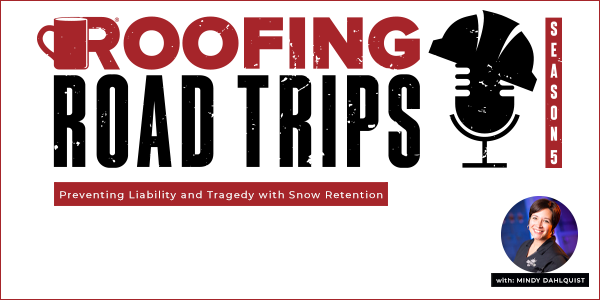
Mindy Dahlquist and Nick Metzer - Preventing Liability and Tragedy with Snow Retention - PODCAST TRANSCRIPTION
Read More ...
Roofing Road Trips with Heidi- Insurance in the New Normal PODCAST TRANSCRIPTION
Read More ...


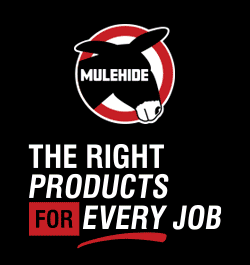
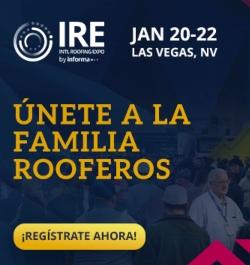









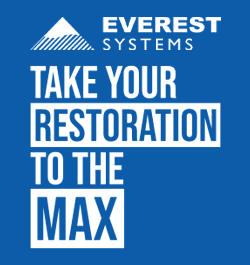

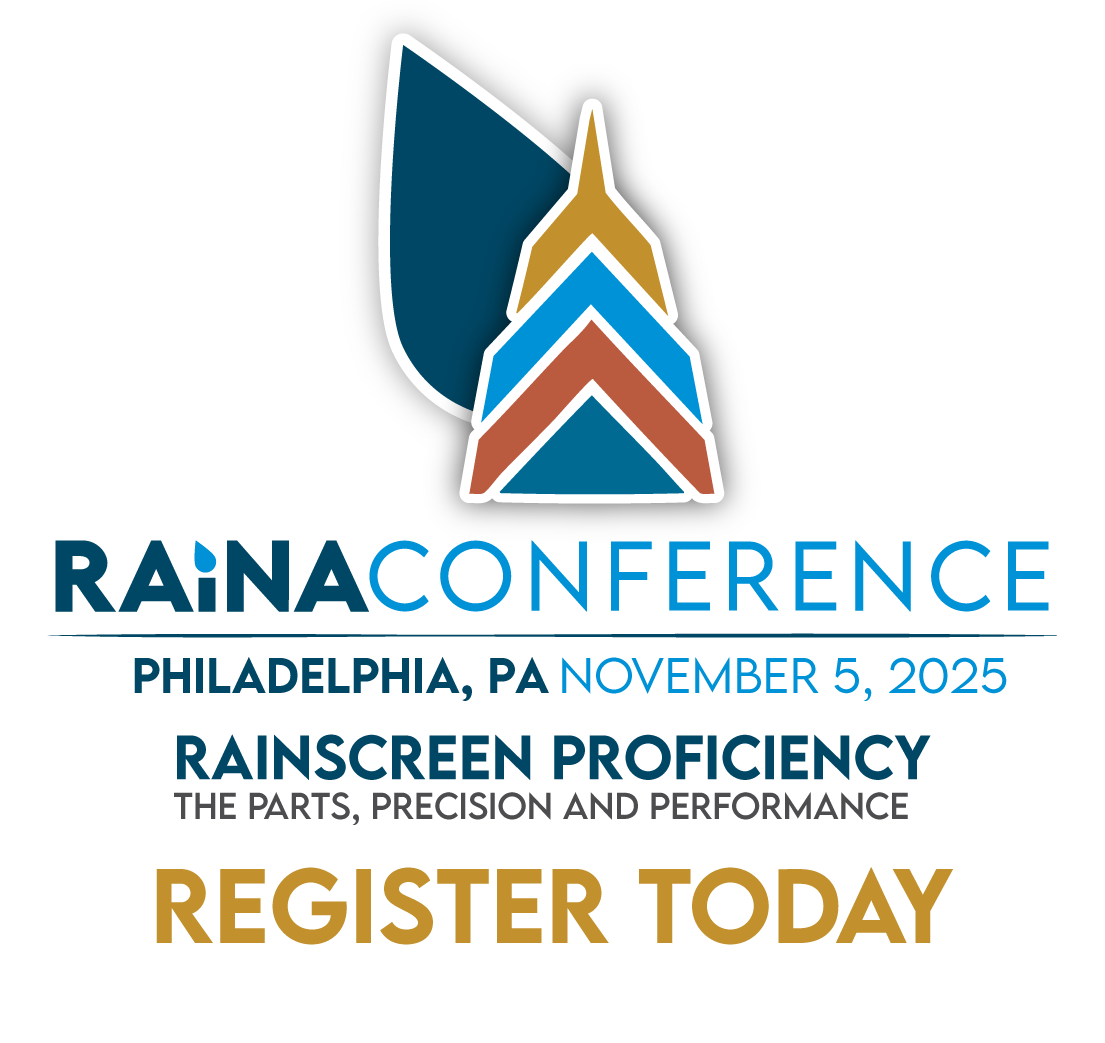


Comments
Leave a Reply
Have an account? Login to leave a comment!
Sign In